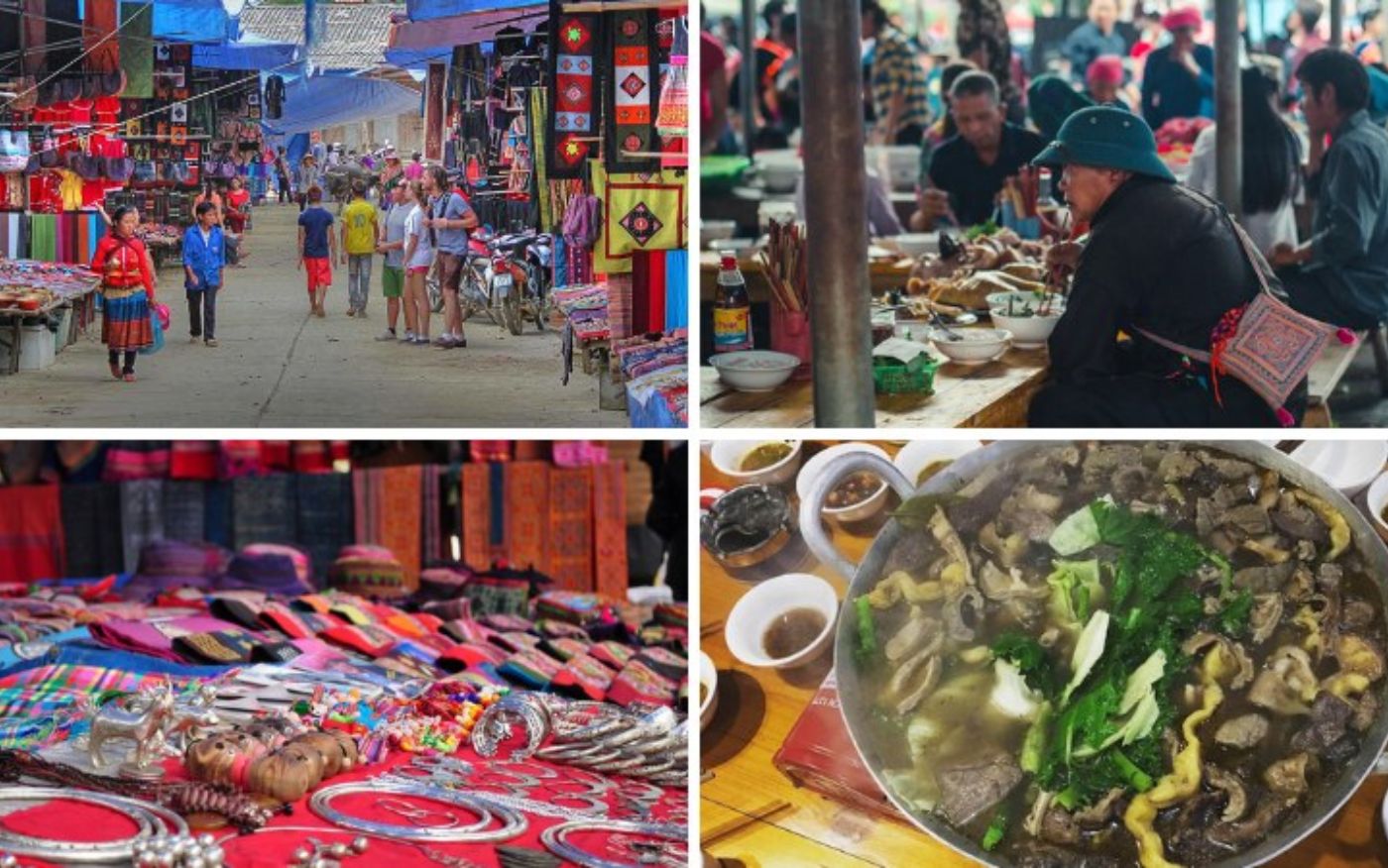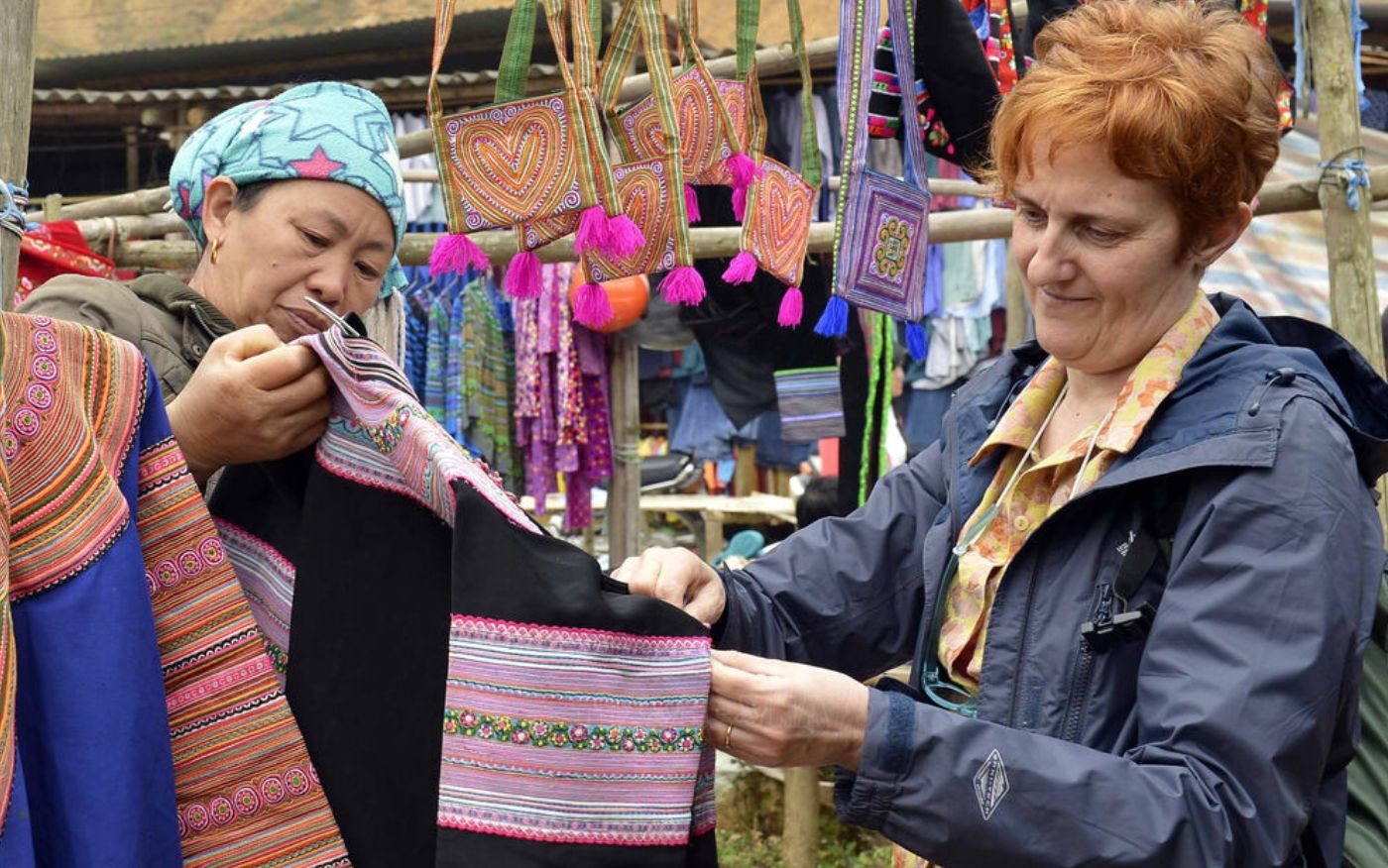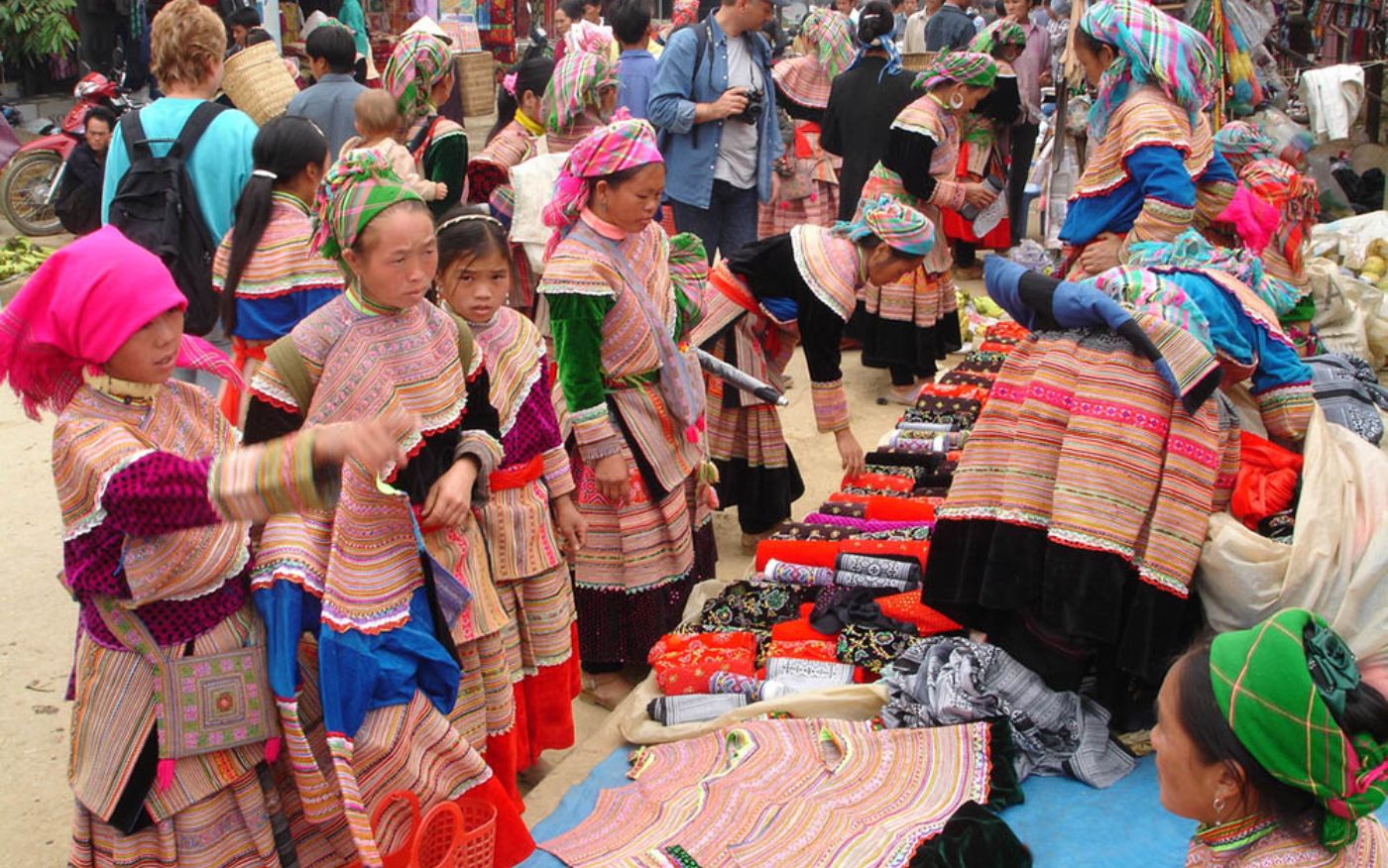Nestled in the misty mountains of northern Vietnam, Sapa is not only famous for its breathtaking landscapes but also for its vibrant weekly markets. These bustling gatherings are where ethnic minorities such as the H’mong, Dao, and Tay come together to trade goods, share stories, and celebrate their unique traditions. Sapa’s weekly markets are more than just trading hubs; they are vibrant cultural spaces where ancient traditions and local lifestyles are preserved. From bartering goods to cultural performances, these markets offer an immersive experience for visitors looking to connect with the authentic spirit of Vietnam’s highlands.
Location: Bac Ha town, Lao Cai province
Market Day: Every Sunday (early morning until around 2 PM)
Highlights: Bac Ha Market is the largest and most famous ethnic market in the region, drawing the Flower H’mong, Tay, Nung, and Dao people. The market is a spectacle of colors, as locals dress in their vibrant traditional attire to trade goods such as textiles, handicrafts, fresh produce, and livestock. Visitors can witness a unique animal trade section where horses, buffaloes, and even dogs are sold.


Location: Can Cau commune, Si Ma Cai district, Lao Cai province
Market Day: Every Saturday (from early morning until noon)
Highlights: Situated in a picturesque valley, Can Cau Market is known for its vibrant mix of ethnic groups, mainly the Flower H’mong and Giay people. Unlike Bac Ha Market, Can Cau is smaller and less touristy, making it a more intimate experience. The market specializes in buffalo trading, along with textiles, silver jewelry, and agricultural tools.



Location: Coc Ly commune, Bac Ha district, Lao Cai province
Market Day: Every Tuesday (morning until early afternoon)
Highlights: Located near the Chay River, Coc Ly Market is an off-the-beaten-path experience, attracting the H’mong, Dao, and Tay communities. Besides trading goods, this market is known for its scenic surroundings. As you step onto the riverbank, the first thing that catches the eye is the dazzling display of traditional clothing worn by local ethnic groups. Young H’mong girls, dressed in vibrant floral skirts, gather at the bridge, showcasing their finest outfits while playfully searching for potential suitors. The market itself is alive with energy, offering everything from fresh mountain produce to handmade crafts.After exploring the market, visitors can take a boat ride along the Chay River to admire the stunning landscapes and visit nearby ethnic villages.



Location: Muong Hum commune, Bat Xat district, Lao Cai province
Market Day: Every Sunday (morning until early afternoon)
Highlights: This market is set in a misty valley surrounded by terraced fields and mountains. Muong Hum Market is a gathering place for the Ha Nhi, H’mong, Red Dao, and Giay ethnic groups. It offers a fascinating insight into the highland culture and traditions. Apart from agricultural products and livestock, visitors can find beautifully handcrafted textiles and embroidery here. Unlike the more touristy markets, Muong Hum retains a strong local character. It is a place where villagers from different ethnic groups, including the H’mong, Dao, Ha Nhi, and Giay, gather not just to trade goods but also to socialize and celebrate their cultural heritage. Visitors will find themselves immersed in a lively atmosphere, where locals in their striking traditional outfits engage in animated conversations, participate in folk games, and showcase their craftsmanship.


Location: Muong Khuong district, Lao Cai province
Market Day: Every Thursday (morning until noon)
Highlights: Unlike the larger markets, Lung Khau Nhin is quieter but equally charming. The market is a social hub for the Flower H’mong, Tu Di, and Phu La ethnic groups, who gather here to sell honey, medicinal herbs, and handcrafted products. It’s an excellent place to observe the daily lives of highland people without the crowds.



Location: Sin Cheng commune, Si Ma Cai district, Lao Cai province
Market Day: Every Wednesday (morning until early afternoon)
Highlights: Sin Cheng Market is a small but culturally rich gathering, mainly frequented by the Flower H’mong and Nung ethnic groups. Here, visitors can find handmade textiles, silver accessories, and traditional farming tools. The market is a fantastic place to observe ethnic women weaving intricate patterns and men bargaining over livestock.


One of the most fascinating aspects of Sapa’s markets is the bartering system. Instead of using cash, many ethnic groups still trade goods directly. Farmers bring homegrown vegetables, rice, livestock, or handmade products and exchange them for essentials like salt, fabric, or farming tools.
For instance, a local trader might exchange a bundle of cinnamon bark for a basket of fresh vegetables, creating a lively and interactive marketplace. This practice is a reflection of the region’s deep-rooted community bonds and self-sufficiency.

Markets in Sapa are not just places to shop—they are also vibrant cultural hubs. Visitors can enjoy traditional folk songs, listen to the melodies of the khèn (a bamboo wind instrument), and watch young villagers perform their traditional dances.
These performances celebrate the region’s history and folklore, offering visitors an opportunity to connect with the spirit of the highlands through music and dance.

For many ethnic groups, market days are the most important social events of the week. Young men and women dress in their finest handmade outfits, hoping to meet a potential life partner. Elders gather to exchange stories, and families reunite over shared meals of thắng cố and corn wine. In a region where modern communication is still limited, these markets remain a crucial gathering point, fostering social bonds and preserving traditions that have been passed down for generations.

One of the best parts of visiting Sapa’s markets is the opportunity to taste authentic local dishes. Each market offers its own specialties, but some must-try foods include:

Visiting a market in Sapa is not just about shopping—it’s about witnessing the authentic daily life of Vietnam’s ethnic minorities. Whether you’re admiring the intricate textiles of the H’mong people, tasting a bowl of phở chua, or watching a lively barter negotiation, every moment at these markets offers a glimpse into a culture that remains beautifully untouched by time.